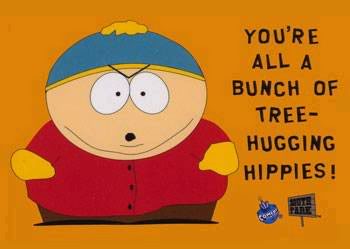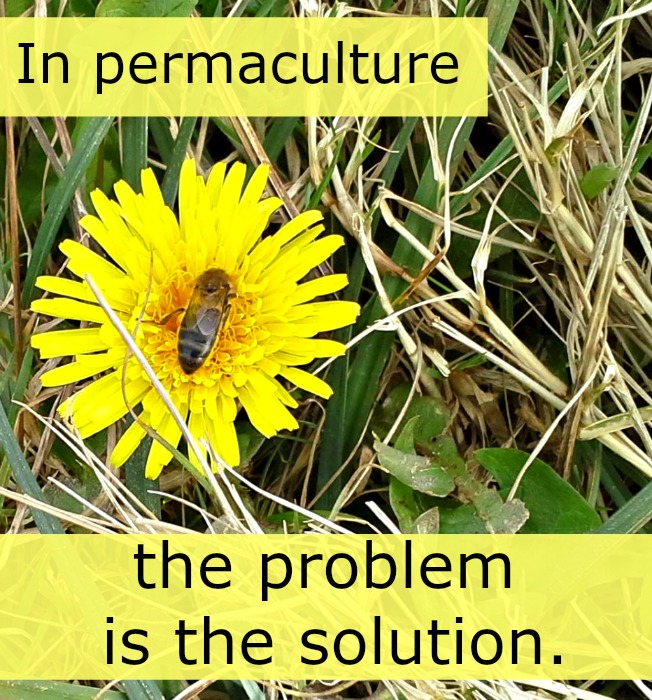I tend go back and forth between wanting to fit in and wanting to not fit in. At first, it may sound odd that someone would want to be a misfit, but hear me out. You see, humans have always wanted to find a common bond with one another. We’re social creatures; it’s natural. But at some point, that common bond started to be built around materialism, consumerism, and other ideals that, at their very core, are unsustainable and destructive. Once I started learning that, I, like many environmentalists, wanted to quit all of it. I wanted to show everyone that you don’t have to have all these things to be happy. You don’t have to wear makeup, you don’t have to wear cool clothes, you don’t have to look or act like the rest of your culture.
But although those things are true — indeed, things do not make us happy — something is often missed in this new insight. This switch in thinking that causes one group to look and act very differently from another group causes a divide. Soon, the mainstream group is sneering at the hippies, wondering why they smell so awful. For the longest time, I couldn’t figure out why the general public put such a bad connotation to the word hippie. If most hippies are about love and peace, why focus so much hate upon them?
Then one day it hit me. It’s not because the general public sees them and feels guilty (don’t kid yourselves). It’s because, deep down, they feel insulted. It’s as if you were in a group of friends, and then one day you decided none of them were good enough, and you wanted to go form your own group of friends. You and your new group of friends would do everything completely differently from the old group of friends. Even if you had good intentions for doing so, say you moved from a group of trouble makers to a group of do-gooders, the old group of friends is going to take it as an insult. If this example were in a middle or high school, you would probably be picked on, insulted, and maybe attacked for this action.
It doesn’t matter your intentions. If you are purposely being very different, you might not be taken very seriously in your work for change. People won’t be as compelled to follow you as a leader. They may throw you off as some loony, because you are just simply too different. So what’s one to do?
According to Bill Mollison, “The problem is the solution.” The problem is that our current way of living, the way with which our society is comfortable and happy, is not sustainable — meaning, Earth cannot continue to support human life for many more generations if we continue this way of life. But the problem is also that most people don’t want to change this way of living, because, like just mentioned, they are comfortable and happy this way. And the problem is also that if some of us figure out how to change this way of life into something that is sustainable, the rest of society may shut us out, because we have become too different.

How can we turn those problems into the solution? We can try to fit in, but in a sustainable way, as we lead them. We can make real sustainability (not just recycling our milk jugs, but changing our whole lives) cool. If we all just want to fit in, then all we have to do is steer that definition in the right direction. All we have to do is make sustainability cool. Sustainability and green are kind of buzz words right now. But I don’t think most people realize what kind of life changes it would require for us to change the direction of the path we are currently headed down.
My role in this game is to make changes without appearing too different from the crowd, and then make it all look really awesome. My clothes don’t appear to be too different, that’s because I buy used clothes with classic designs that last longer than fast fashion. I will wear a little makeup, but I make sure I buy all natural stuff that is sustainably made. Would no makeup be better? Yes, but the world isn’t there yet, and I want to fit in so that I can make a bigger change by influencing more people.
My house is average, but I will slowly be changing it to a beautiful and cool, sustainable icon. When the shingles deteriorate, I will replace them with something that has the smallest impact on the environment and lasts the longest, but also fits into the neighborhood. When the siding needs replaced, we will probably switch to stucco or brick. When we have the money, we will get solar panels and build masonry rocket mass heaters. We’ll redesign the inside to create an apartment or a classroom area in the bottom part. And of course the yard will be the coolest permaculture paradise you’ll ever see. Our quarter acre will produce so much food and medicine and be so beautiful, that everyone that sees it will say, “Help me do that to my house and yard!” And that’s how I plan to make a difference.